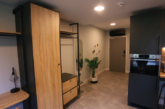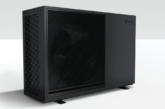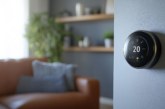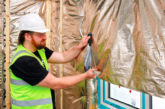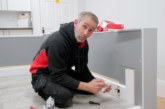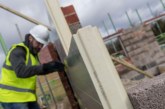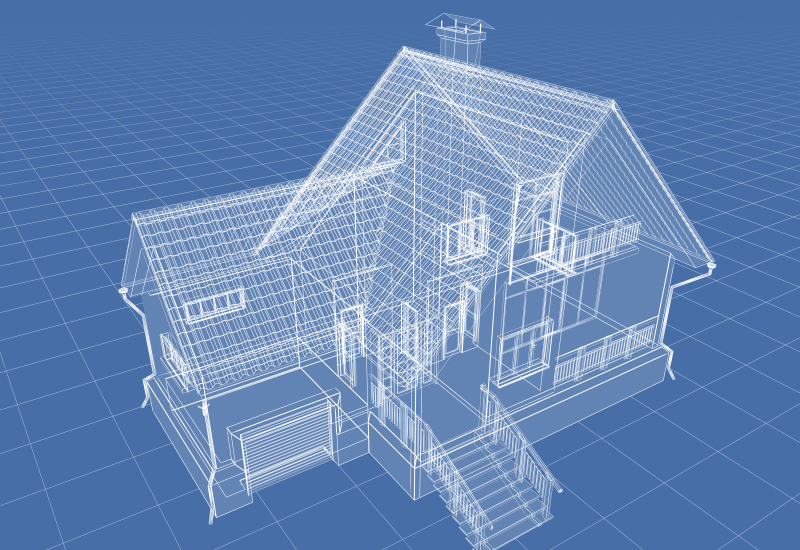
When specifying a heating system for a new build property, there are a wide variety of considerations that housebuilders need to take into account to make sure that the heating system can produce maximum efficiency returns. Sean O’Dwyer, Application Design Manager for Potterton, advises on the best practices.
To ensure homeowners’ heating and hot water demands are met, it is important to install the right system for the property and to place equipment in the correct location in the home. The integration of an appropriate heating system into a new build is vital to maximising the level of heat output and return on investment; equipment selection and System design are the first steps to achieving a high performance heating system.
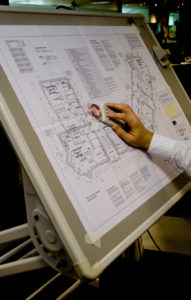 When planning a heating system the client will usually have engaged the services of a Standard Assessment Procedure (SAP) assessor. The assessor would have made recommendations on heating systems in order to reach the clients required rating. To achieve the required SAP rating for a property there needs to be good levels of insulation along with a highly efficient heating and hot water system and the developer has to balance his choice of equipment and materials to achieve the most economical build to reach the required ratings.
When planning a heating system the client will usually have engaged the services of a Standard Assessment Procedure (SAP) assessor. The assessor would have made recommendations on heating systems in order to reach the clients required rating. To achieve the required SAP rating for a property there needs to be good levels of insulation along with a highly efficient heating and hot water system and the developer has to balance his choice of equipment and materials to achieve the most economical build to reach the required ratings.
As well as achieving the SAP rating the heating and hot water systems need to be functional. This is where the services of Potterton’s NewDesign team provide a complete design service for residential developments. We also work with SAP assessors and other technical parties to help housebuilders to meet carbon and/or energy targets. With an average four week lead time to provide initial heating and plumbing designs we will review and adjust, as necessary, based on customer feedback to ensure that the final system is the most suitable for the property.
Placement
Although 80% of customers usually have an idea of where the boiler or cylinder needs to be sited, this can change depending on whether we deem the placement of these systems to be detrimental to the heating or plumbing design.
The usual position for boilers is in the kitchen or the utility room and cylinders normally airing cupboards, although recently, as customers want more space because of multi-generational living amongst other elements, boilers have been moving out of the kitchen area and into garages, airing cupboards and W/C’s.
Radiators
Radiators should ideally be placed beneath window sills, where possible, as cold air entering the room is heated by the convective air. If radiators are placed away from windows then the cold air is drawn across the room to the radiators creating a draft in the room.
The physical size of the room needs to be considered when allocating wall space for radiators. The heating reach is usually 2.5 metres from the radiator and therefore if seating areas are situated outside of this range cold spots maybe experienced by the house occupants. Two smaller radiators at opposite ends of the room are preferable to one large radiator at one end of the room.
Flue
The flue position is critical as boundary lines must be followed whilst still being aware of window openings and nuisance from plumes. Flue installers should consult the boiler manual for guidance on positioning the flue to maintain the minimum clearances and prevent any future issues from arising.
Compliance
All heating systems should be designed and installed in compliance with Building Regulations which give guidance on the minimum level of heating system controls required. Under the regulations, a property is required to be split into a heating zone for every 150m2 of floor space with an interlocked thermostat to control each zone as well as other requirements.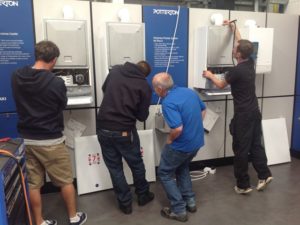
NewDesign will advise on the most suitable split as the layout will have a major impact on the final selection with some being a Ground floor/first floor split or a living area/sleeping area spit. Although two heating zones are only required for properties over 150m2, when a SAP assessment is required the default is normally two zones as this helps boost the SAP rating with minimal investment.
Room Thermostat
As well as selecting the correct thermostat for the system, the location of the thermostat has a major effect on comfort levels and efficiency of the system. While there is no perfect location to suit every house there are some pitfalls that should be avoided. These include:
- Installing thermostats in rooms that have another heat source such as a kitchen or sun room
- Installing thermostats in Small enclosed corridors or box rooms
- Fixing the thermostat on the adjoining walls of a cylinder cupboard, as this will affect the temperature reading.
Thermostats should be located a suitable distance away from radiators and glazing to reduce the risk of an obscure temperature reading.
Commissioning
NewDesign will help clients to take all of required steps to achieve the most suitable design for their properties post design and installation. There are some key commissioning procedures to ensure trouble free operation.
Once the system has been installed it needs to be flushed so that any debris from the installation process can be cleaned out of the system. The system should then be filled with the correct quantities of the relevant water treatment solution.
Failure to clean the system and install the correct chemicals will lead to system failure sooner rather than later as sludge and debris will cause the heat exchanger to fail and reduce efficiency whilst causing corrosion to the heating system.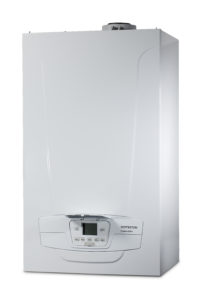
Systems will have at least one bypass in the system, either built into the boiler or externally in the system. These will need to be set correctly for each system to prevent short cycling of the boiler.
A full commissioning process must also take place once the heating system has been installed. This is an essential part of the process as it enables the system to function correctly and provides a record for future checks to maintain system efficiency.
By choosing a highly efficient boiler and ensuring that the heating system is suitably designed, installed and commissioned, and serviced annually, the heating system will provide comfort, trouble-free operation with good efficiency performance.

